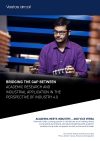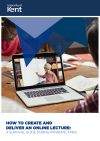As young people start to explore their career options, it’s not uncommon for them to feel unsure about what they want to do
Students from underrepresented backgrounds may have even less clarity in their career options – due to a lack of resources or access to networks that could inform their decision-making process. This lack of awareness can prevent students from discovering careers that they would enjoy and excel in, leading them to potentially overlook opportunities that would be a great fit for them.
Additionally, systemic biases can impact the career options and choices of underrepresented students. For example, young women are often discouraged from pursuing careers in Science Technology Engineering and Maths (STEM), despite possessing the skills and interest necessary to succeed in these fields. The lack of representation of women in STEM fields also contributes to a lack of role models, making it more challenging for young women to envision themselves in these professions.
Fortunately, though, there are steps that can be taken to make these ‘invisible; careers more visible to all students – and to encourage students from all works of life to follow career paths that interest, inspire and enthuse them. Let’s take a look.
Making career paths more equitable
To make so-called invisible careers visible to all pupils, it is crucial to address systemic biases and increase diversity awareness. For instance, we’ve already explored the idea that the underrepresentation of women in STEM fields is a systemic issue that has led to a lack of awareness and opportunity for girls and women in these fields. To address this issue, we must create a more inclusive and welcoming environment for women in STEM and ensure that they have access to the same career options, resources and opportunities as their male counterparts – as well as strong female role models to inspire them.
Providing students with opportunities to explore different career paths and gain exposure to various industries
Moreover, it’s important to provide students with opportunities to explore different career paths and gain exposure to various industries. This can be achieved through internships, job shadowing programs, and even career fairs (though many face-to-face meet-ups have now shifted online). By connecting students with professionals in different fields, we can help them gain a better understanding of the skills and knowledge required for different careers and make informed decisions about their future.
Creating a diverse educational environment
Another effective approach to tackling ‘invisible careers’ is to incorporate career exploration and education into the school curriculum. And the good news is that many schools already offer career development programs that provide students with the opportunity to learn about different careers, develop career-related skills and gain practical experience. By integrating career education into the curriculum, we can help students make informed decisions about their future and prepare them for success in the workforce.
To ensure that all students have equal access to career education and opportunities, it is important to create more inclusive environments. This includes providing resources and support to underrepresented students – for example, access to successful professionals who have overcome obstacles to success can be incredibly valuable for young people who might otherwise feel isolated or unsure of their career prospects.
It’s also crucial, of course, for teaching staff to address any biases they may have, including unconscious biases that may affect how they perceive and interact with certain students. However, it’s important to note that biases are not inherently bad – they are a natural part of how we process information and make decisions. The key is to become aware of our biases and actively work to challenge them, to ensure that we are creating a fair and inclusive learning environment for all students.
Expanding career options
So, making invisible careers visible to all pupils requires a concerted effort to address systemic biases, increase diversity awareness, and provide students with opportunities to explore different career paths.
By connecting students with professionals in different fields, integrating career education into the curriculum, and creating more inclusive environments, we can help students make informed decisions about their future and prepare them for success in the workforce.
Together, we can expand career options for all students and create a more equitable and prosperous society.
Written by Nic Ponsford FRSA, Award-winning Founder of the Global Equality Collective (GEC Education)
Editor's Recommended Articles
-
Must Read >> International Women’s Day: Empowering women in STEM
-
Must Read >> How can we deliver school improvement on a budget?





























